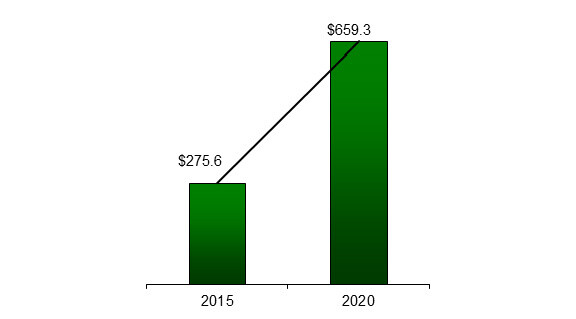he radio access networks (RAN) capacity planning and management market covers participants that offer standalone testing solutions. It is quite fragmented, comprising a wide range of specialists.
The market can be categorized into probe-based RAN capacity planning and optimizing solutions, RAN-specific traffic management solutions, RAN-specific data analytics, and radio frequency (RF)-based RAN capacity planning and optimizing solutions.
In 2015, the RAN capacity planning and management market generated revenue of $275.6 million. By 2020, the market is expected to reach $659.3 million, and will experience a healthy double-digit compound annual growth rate (CAGR) of 19.1% during 2015 to 2020.
Exhibit 1: Global RAN Capacity Planning and Management Market, Global, 2015 and 2020

Generating $75 million in 2015, probe-based capacity planning solutions formed a major share of the RAN capacity planning and management market. This is followed by the data analytics market segment, which accounted for a 27.1% share of the market and generated $74.8 million in 2015.
The need to shift from a ‘just in case’ scenario to a more ‘just in time’ scenario is a significant trend driving the RAN capacity planning and management market. The market is further influenced by the requirement to streamline the business support system (BSS) with the operation support system (OSS). These systems are not thoroughly integrated, which limits network utilization.
The market is further influenced by other progressive ideas involving software-defined networks (SDN), virtualization of network functions, the Internet of Things (IoT), and the proliferation of self-optimizing networks (SON) among network operators.
While the market is poised to experience considerable growth in future, it is challenged by the inadequate level of end-user expertise when incorporating such solutions onto the network infrastructure. The challenge is also enhanced by the use of function-rich network elements by network operators, particularly in the Asia-Pacific (APAC) region.



